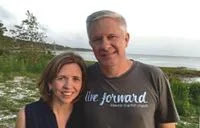A few days ago, I was riding home from one of my bread runs in the Little Italy area of the Bronx. After stopping at one of the fruit stands in Fordham Plaza, I proceeded up Webster Avenue. A bit more than a block north of Fordham Road, I noticed a pothole so deep that I could see, on one side, the bedrock underneath and on the other, what looked like utility pipes.
That hole was there when I first moved into the neighborhood, just over a year ago. The one good thing I can say is that because I know it's there, I barely have to look for it in order to dodge it: It's as if an image of it, or its location, is lodged into my mental GPS, if you will. But I wonder whether someone who isn't familiar with that stretch of Webster has been pitched off their bike when their front wheel dropped into it.
That idle thought led to another: If the person's bike was damaged or destroyed--or if they were injured--could they sue the city?
I don't know what New York City regulations say, or don't say, about such a scenario. But I imagine that some lawyer could make a case for someone being reimbursed for a damaged or destroyed bike, medical bills and lost wages.
In Palo Alto, California--home to Stanford University and a major technology hub--Peggy Hock-McCalley is bringing such a lawsuit against the city. Last September, Roderick McCalley, her 81-year-old husband, was riding along Park Boulevard when he fell and sustained a major head injury and neck fracture. Two days later, he died.
 |
| Cyclists on Park Boulevard, Palo Alto. Photo by Gennady Sheyner for Palo Alto Online. |
The city claims Mr. McCalley had entered a lane closed for construction when the accident occurred. The suit filed by his widow maintains that he fell into an unmarked open construction ditch in the asphalt. So, while I have no firsthand knowledge of the case, I can understand--especially given my near-encounter with the pothole on Webster Avenue--how he or someone else could ride into a hole or depression he couldn't have seen, or wouldn't have known to look for, as he was riding.
Also, Ms. Hock-McCalley maintains, "There were no warning signs" which made the ditch a "hidden hazard" for "persons who use the road every day."
She is seeking more than $35,000 from the city for creating dangerous conditions, negligence and wrongful death. Whether or not she wins, if you'll indulge me a cliché, it won't bring back her husband. And unless Palo Alto--and other cities--are more proactive in addressing road hazards, there will be other tragedies like the one that befell Roderick McCalley.












